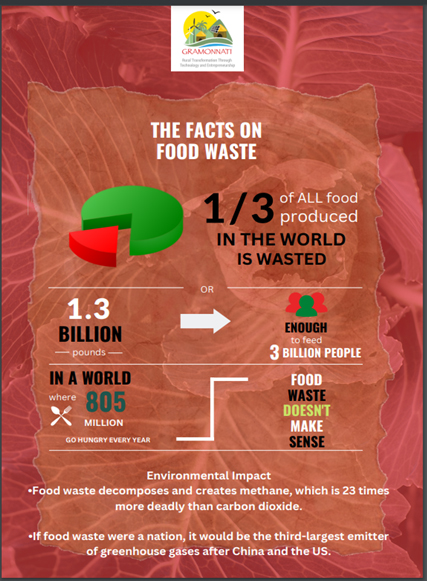The Problem of food waste
Food waste is a massive market inefficiency and environmental threat. Globally, an alarming 33 to 50 percent of all produced food is wasted, amounting to a staggering value of over $1 trillion. Simultaneously, 800 million individuals suffer from hunger every night. The interconnectedness of the food supply chain exacerbates this problem, as increased demand for food in developed countries drives up prices and displaces crops meant for local populations in developing nations. The consequences of food waste extend far beyond economic disparities; they have a detrimental impact on the environment as well.
The unconsumed food accounts for a significant 25 percent of global freshwater consumption. The wastage of resources involved in producing this food—such as land, water, labour, energy, manufacturing, and packaging—is highly concerning. The disposal of food waste in landfills leads to the release of methane, a greenhouse gas 23 times more potent than carbon dioxide.
Fruits and vegetables play a crucial role in providing balanced and nutritious diets, feeding over 1 billion people worldwide. India stands as the second-largest vegetable and fourth-largest fruit producer globally.
However, the perishable nature of these crops contributes to significant post-harvest losses, primarily due to a lack of awareness regarding preservation, transportation, and marketing techniques.
Approximately 30 percent of fruits and vegetables become unfit for consumption due to spoilage after harvesting. Post-harvest loss refers to the weight of edible produce that, despite being separated from its immediate growth and intended for human consumption, fails to be consumed due to various reasons.
This loss negatively impacts both the quantity and quality of produce, reducing its market value. The implementation of primary and secondary processing methods for fruits and vegetables not only reduces losses but also creates employment opportunities, particularly benefiting rural youth and women.

